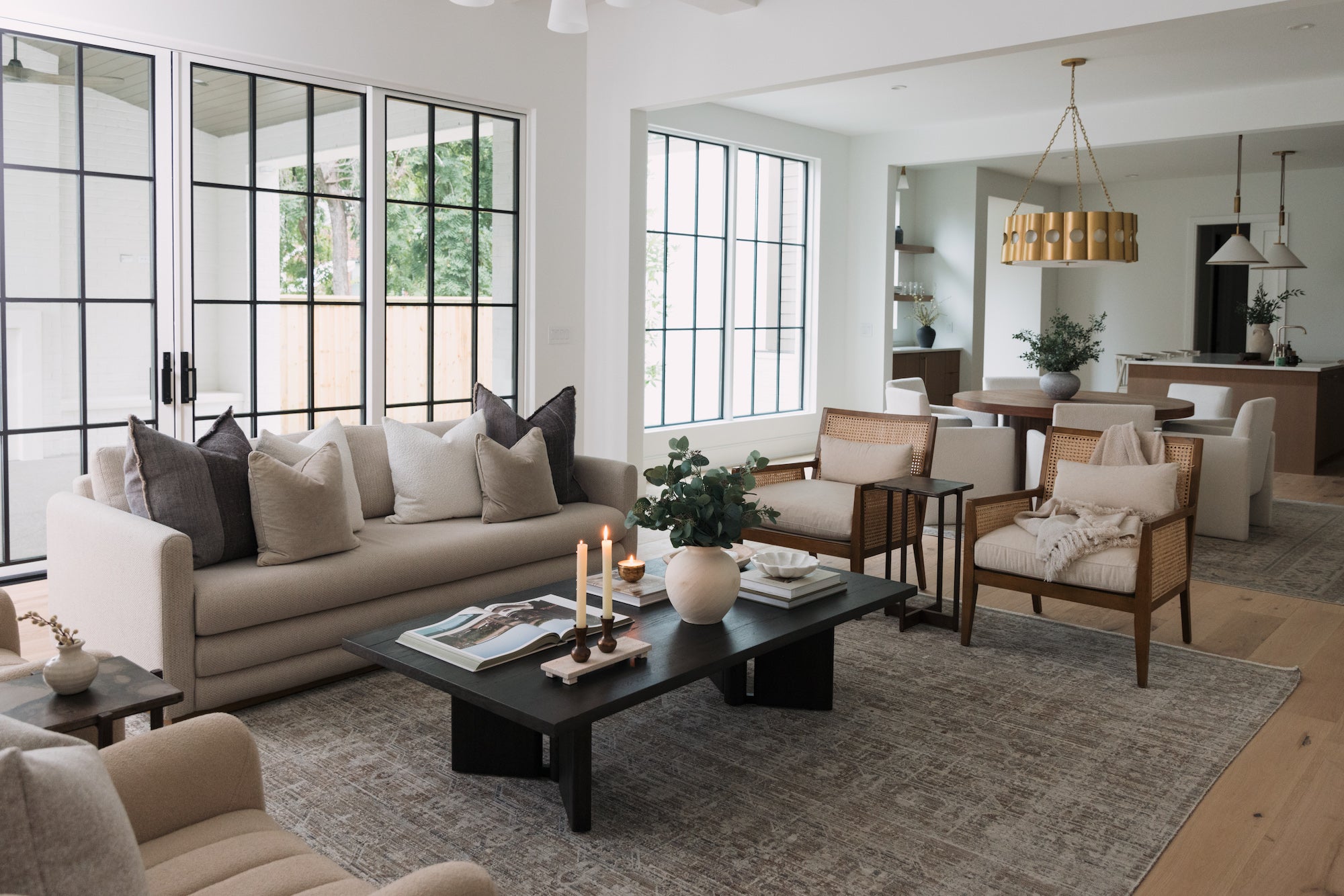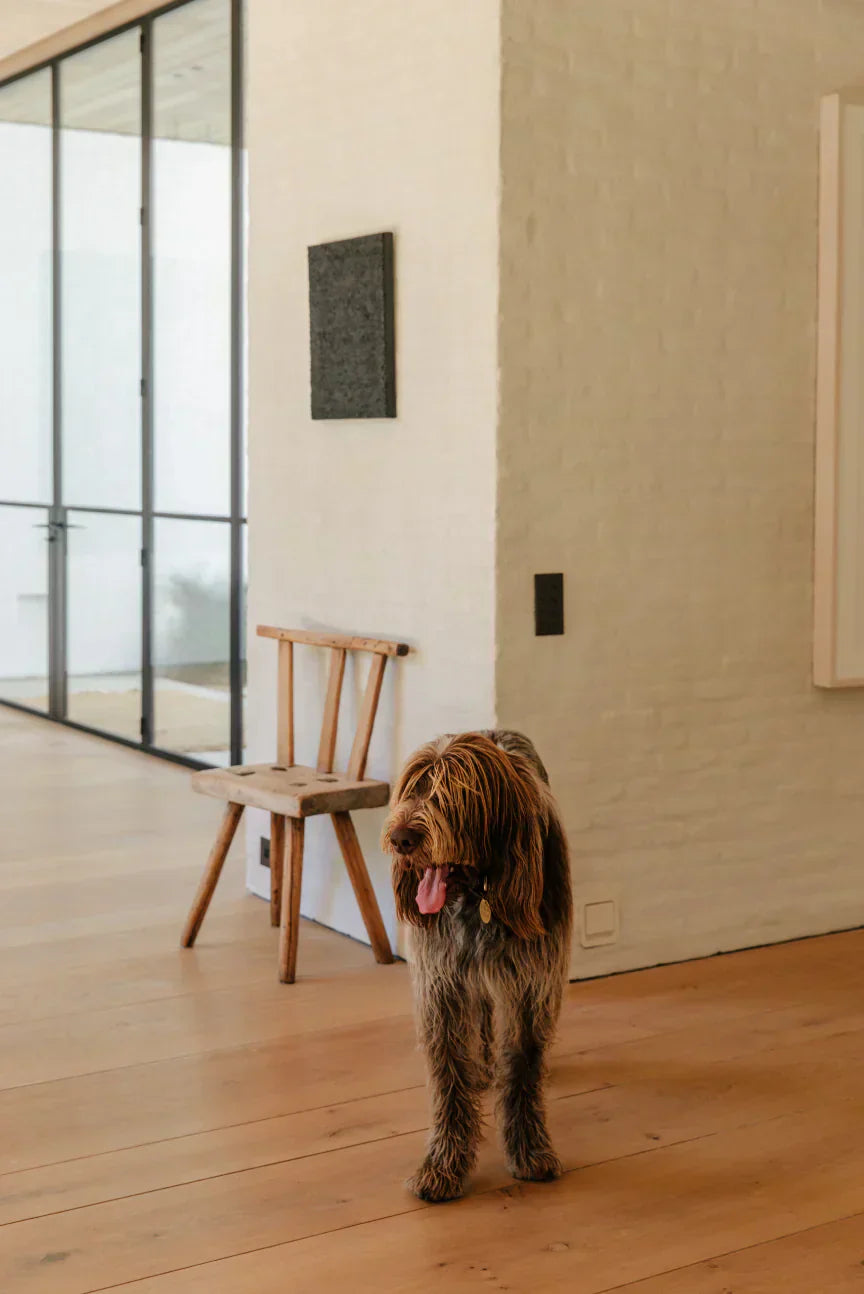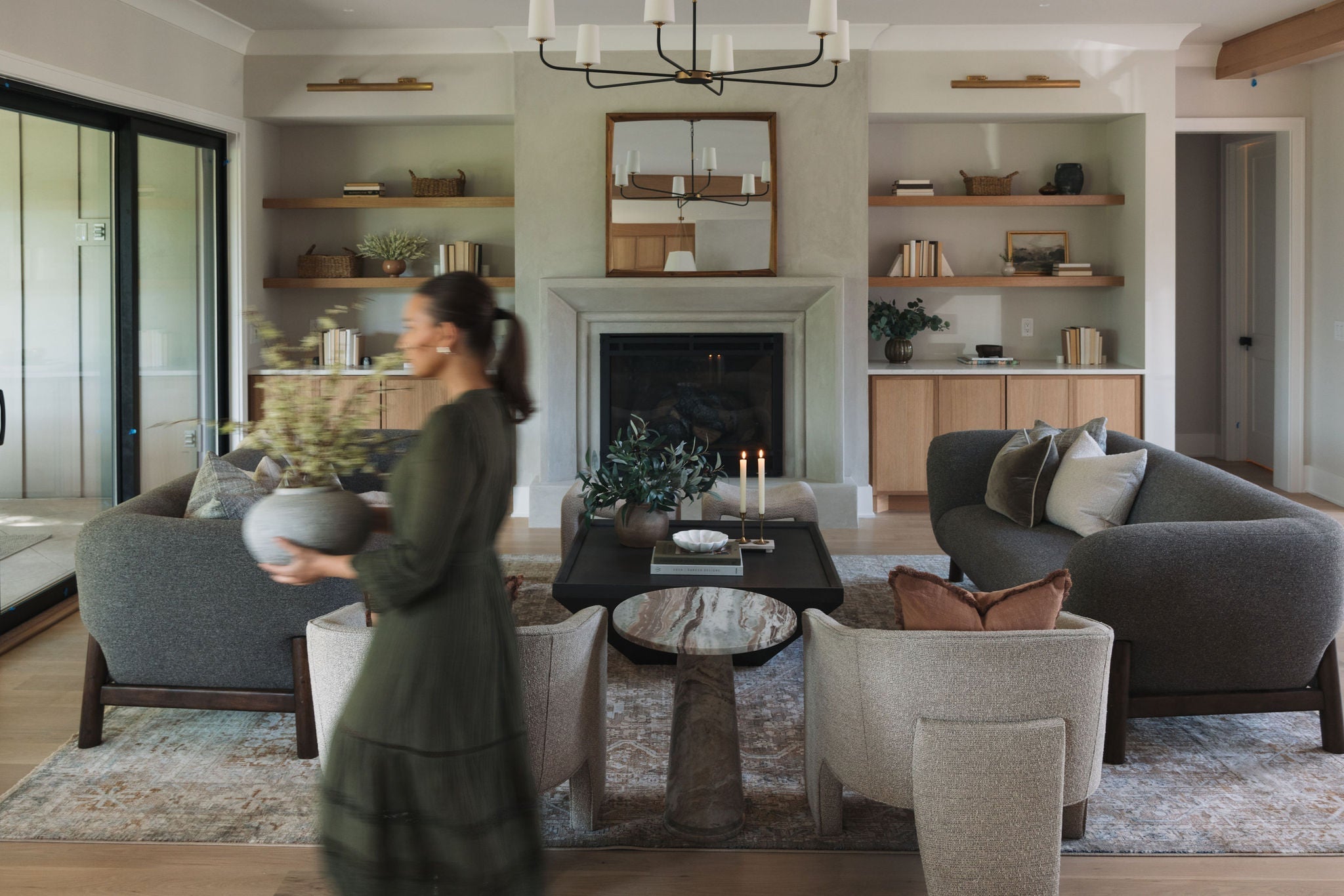Where We Gather: Designing Shared Spaces That Feel Like Home

Designing a space for one person is a thoughtful act of self-expression. Designing for many? That’s choreography. It’s a layered dance of needs, personalities, and purposes—each calling for their moment in the spotlight.
Shared spaces—your living rooms, dens, open kitchens, family hubs—are the soul of the home. They’re where the coffee is poured, the Legos are scattered, the calls are taken, and the quiet is craved. These rooms hold multitudes. And because of that, they deserve something better than one-size-fits-all design.
If your living room feels like a revolving door or your family den is doing emotional gymnastics trying to be everything for everyone, you’re not alone. The answer isn’t more square footage. It’s smarter, more soulful design.
Here’s how to create shared spaces that feel as beautiful as they are functional—rooms that evolve with your people, reflect your real life, and somehow still look stunning doing it.
Start With Function: What This Room Really Needs to Do
Design begins—not with a color palette—but with purpose. Before buying a single thing, get radically honest about what this space is for. Not what it should be used for, or what Pinterest suggests, but how your people actually use it.
Ask yourself:
- Is this a room for gathering, resting, working, creating?
- Who lives here? Who visits?
- What happens here on a Tuesday afternoon vs. a Saturday morning?
Think of it like building a menu before setting the table. Form follows function—and thank goodness for that.
Create Subtle Zones With Rugs, Lighting, and Layout Cues
Here’s a gentle truth: most new homes today have open floor plans. And while you might think that building more walls will equal less chaos and more order, you don't need to. You just need better cues. A well-zoned space reads like a great novel. Each chapter has its own arc, but the whole story flows.
How to zone without a sledgehammer:
- Use rugs to quietly say: “This is where we gather.”
- Lighting is your mood setter—pendants, lamps, and sconces, oh my.
- Float your furniture. Let pieces anchor each area without pushing them to the periphery.
Zoning isn’t about separation—it’s about rhythm. It allows a space to breathe between tasks, moods, and moments.
Let Smart Storage Keep the Clutter Out and the Calm In
Shared spaces are magnets for clutter. Remote controls. Paint sets. That one sock no one claims. But here’s the thing—clutter isn’t the enemy. Lack of storage is.
Design-forward ways to organize your life:
- Ottomans that open, consoles that conceal, baskets that charm.
- Built-ins with both open and closed shelving (a true overachiever).
- Storage zones at multiple heights, so even little hands can reset the room.
This isn’t about perfection—it’s about ease. When your space is designed to handle the mess, it rarely gets overwhelmed by it.
Blend Styles and Materials to Reflect Every Voice at Home
One of the quiet challenges in shared space design? You’re not just designing for one person’s aesthetic. You’re blending a family—or a household—of perspectives. This isn’t compromise. It’s composition.
Make the mix feel intentional, not accidental:
- Combine soft and structured: a boucle chair next to a wood-and-steel coffee table.
- Repeat materials across zones for cohesion, even when styles diverge.
- Let the mix tell a story: heirloom meets modern, rustic meets refined.
The goal isn’t uniformity. It’s harmony. Think of it as creating a visual dinner party where every guest brings something different to the table—and it all still works.
Ground With Neutrals, Then Layer in Color, Art, and Story
A tonal foundation gives your eyes a place to land. It quiets the visual noise so your personality can sing. From there, you layer. Textiles. Art. Books. The oddball treasure from the flea market.
Tips for visual layering:
- Start with grounding hues: clay, olive, sand, oat, stone.
- Layer in personality: bold pillows, sculptural finds, heirloom pieces.
- Curate art that speaks—about your people, your history, your humor.
Your room should feel like a well-traveled suitcase: filled with souvenirs, stories, and the comfort of familiarity.
Choose Flexible Furniture That Moves With You Daily
In a shared space, the furniture that earns its keep is the furniture that flexes. A pouf that moonlights as a side table. A console that shifts from toy zone to Zoom backdrop. A dining bench that serves as overflow seating come book club night.
Flexibility favorites:
- Nesting tables for one, two, or ten.
- Rolling carts for craft hour or cocktails.
- Lightweight seating for the spontaneous plus-one.
Movement isn’t just practical—it’s freeing. It allows your space to evolve with your day, your season, and your ever-expanding to-do list.
Prioritize Comfort—but Keep the Style You Love, Too
You don’t have to choose between style and comfort. You just have to choose well. Style without comfort is performance. Comfort without style feels unfinished. The magic is in the mix.
Anchor your room with pieces that feel as good as they look:
- Deep, down-filled sofas that can survive spaghetti night.
- Armchairs that support the back and the vibe.
- Natural rugs that patina beautifully with age.
Design doesn’t have to be precious to be beautiful. Your room should be lived in—and loved on.
Shared Spaces Should Flex Easily—And Still Feel Like You
Shared spaces are where we collide and connect. Where laughter overlaps with screen time and dinner spills into game night. Where lives blur and blend in the best possible way.
At Mayker, we believe that thoughtful design isn’t about trends or rules. It’s about places that work harder, feel warmer, and grow with you.
Because a home that holds many should never feel like too much. It should feel like everything.




